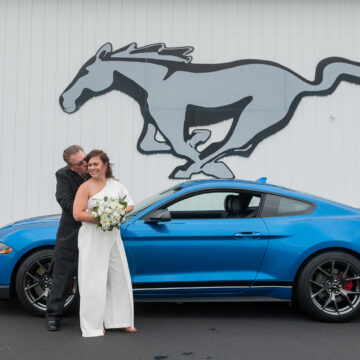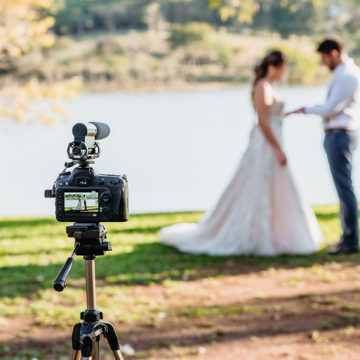Marriage Proposals Are Less of a Surprise, But Proposers Bring Back Time-Honored Traditions Such as Asking on Bended Knee and Asking Parents for Permission
NEW YORK, Nov. 9, 2017 /PRNewswire/ — The Knot, the leading online wedding brand, today released the results of The Knot 2017 Jewelry & Engagement Study. The biannual comprehensive report, the largest of its kind, surveyed more than 14,000 engaged or recently married brides and grooms from the US to uncover the trends and financial spending habits of proposals in America.
As the leading resources in proposal planning, The Knot and How He Asked by The Knot are the go-to sources for soon-to-be engaged couples. With the arrival of Proposal Season-the time of year when 37% of couples get engaged*-couples are eager for expert advice and proposal planning tips. From the best ways to pop the question to the best jewellery store Parramatta they can get their rings from, they’re waiting for advice that will improve their engagement. According to The Knot 2017 Jewelry & Engagement Study, 1 in 4 grooms report “meticulously” planning their marriage proposal “down to the last detail.” The average proposer spends 4.4 months planning their proposal, with 7% of proposers reporting spending 12 months or more planning how they’d pop the question. Even the best-laid plans still left a majority of proposers (60%) feeling nervous before asking for their significant other’s hand in marriage, up from 54% in 2011.
“We’re seeing proposers put more time, thought and effort into creating the perfect proposal, as well as an engagement ring they know their partner will love,” said Kristen Maxwell Cooper, editor in chief of The Knot. The 2 carat cushion cut diamond ring is proving particularly popular now that grooms are taking their partners preferences into consideration more so than before, which isn’t surprising considering the fact it is a beautiful, classic ring. “And while proposals are less of a surprise than in years past, there’s an uptick in grooms returning to time-honored traditions, like proposing with the engagement ring in hand and getting down on one knee. Proposal Season at The Knot is one of our favorite times of the year as we first help to inspire proposers and then guide couples in every aspect of their wedding planning journey-from helping articulate their wedding style, to connecting them to the local vendors who will bring their day to life. Our team thrives on creating content and providing products, like our registry and guest list manager tools, to make wedding planning a breeze so our couples can enjoy the journey.”
Top 2017 Jewelry & Engagement Study Stats
- Average Engagement Ring Spend: $6,351 (up from $5,095 in 2011)
- Average Time Spent Looking for Ring: 3.5 Months
- Average Time Spent Planning a Proposal: 4.4 Months
- Average Number of Rings Looked at Before Purchase: 26
- Engagement Rings With a Custom Design: 45%
- Most Popular Stone Cut: Round (52%)
- Average Carat Size for Center Stone: 1.2 carats
- Average Carat Size for Total Ring: 1.8 carats
- Most Popular Engagement Ring Setting Metal: White Gold (61%)
Top 2017 Trends in Marriage Proposals:
ONLINE DATING IS NOW THE MOST POPULAR WAY SPOUSES-TO-BE MEET. In 2017, 19% of brides reported meeting their significant other through online dating (17%) and social media (2%), up from 14% in 2015. Other popular ways couples meet include through friends (17%), college (15%) and work (12%). This rise in digital dependence continues through each step of the wedding planning journey, with 9 in 10 couples using mobile devices for wedding planning activities in 2016.
COUPLES DISCUSS THEIR ENGAGEMENT AND MARRIED LIFE LONG BEFORE THE PROPOSAL. One in four (24%) couples report discussing marriage two years or more before getting engaged**. Couples are also candid in discussing important topics with their partner before getting engaged, including having children (96%), finances (90%), pets (80%), sex (80%) and religion (79%)**.
ONE IN THREE (33%) COUPLES SHOP FOR THE ENGAGEMENT RING TOGETHER. The average ring purchaser took 3.5 months to find the engagement ring they’d propose with, up from 3.3 months in 2011. While looking for engagement rings, 1 in 3 (33%) couples report shopping together, and 9 in 10 (89%) grooms are happy with their significant other’s level of involvement in the purchasing process. Only 6% of brides wish they would have been more involved in the purchasing process. The majority of grooms (72%) report facing some challenges throughout the ring purchasing journey, most notably not knowing if they were getting a good deal (35%) and not having a firm knowledge about diamond terminology (28%).
ENGAGEMENT RING SPEND IS ON THE RISE AND SHE KNOWS HOW MUCH WAS SPENT. In 2017, the average engagement ring cost $6,351, up 25% since 2011. The majority of grooms (70%) report deciding on the ring budget on their own. Eight percent of grooms report deciding on the ring budget with their partner. Nearly 1 in 3 (29%) grooms report spending more than planned on the engagement ring. Seven in 10 (70%) brides know how much their partner spent on the engagement ring. Nine in 10 (90%) brides report being happy with the amount their fiancé spent on the ring; 6% wish they had spent more and 4% wish they had spent less.
BUYING THE RING ONLINE INCREASES IN POPULARITY. Just as more and more couples meet online (17%) and use their mobile devices for wedding-related tasks (90%), it’s no surprise there’s also a rise in the purchase of engagement rings online (14%). Whether it is buying a 2 carart cushion cut diamond engagement ring, a gold ring or a plain silver ring, buying rings online is a method that some people prefer instead of visiting a store.
With so many sites available now to buy beautiful engagement rings, such as Jacobs the Jewellers, this rise is to be expected. You can click to go directly to Jacobs The Jeweller. While the majority of grooms (86%) continue purchasing rings at retailers-with nearly half (45%) preferring to buy from a local or independent jeweler-14% of grooms purchased the engagement ring over the web, up from 10% in 2011. Grooms who bought rings online reported better pricing online (63%), finding the perfect ring while browsing online (45%), convenience (40%), and wanting to build a custom ring (29%) as the main reasons for moving from brick-and-mortar retailers to online. A popular consideration when it comes to purchasing rings online are silicone rings. The rings can be engraved, are comfortable and easily replaced.
ENGAGEMENT RINGS ARE INCREASINGLY PERSONALIZED FOR EACH COUPLE. Whether grooms completely customized (18%) the ring or implemented touches of custom design (27%) with a jeweler, nearly half (45%) of all grooms had their engagement rings personalized in some capacity. Both brides and grooms agree the most important factors to consider in their ring purchase are the cut and shape of the stone, followed by the ring style and setting, and then the quality of the stone.
TIME-HONORED PROPOSAL TRADITIONS ARE BACK IN STYLE. In 2017, we saw a return to tradition, with 9 in 10 grooms proposing with an engagement ring in hand (91%) and actually using the words “will you marry me?” (91%), up from 85% and 86% since 2011, respectively. The majority of grooms (87%) reported proposing on bended knee, up from 77% in 2011. Grooms are also more frequently asking their partner’s family for permission (78%) than in years past.
PROPOSAL PLANNING TAKES TIME AND EFFORT. Forty percent of grooms reported their marriage proposal was “meticulously planned, down to the last detail.” The study shows a shift away from private proposals, with nearly half (45%) of proposals taking place in a public location, such as a scenic spot, (25%) garden, park or zoo (10%), up from 34% in 2011. While grooms are meticulously planning their proposals over the course of an average 4.4 months, a declining number of brides report being surprised (35%) by the proposal. Couples want to preserve their proposal moment through photos, and 47% report coordinating a photographer or videographer to capture the moment.
*Source: The Knot 2016 Real Weddings Study
**Source: How He Asked 2017 Member Study









Join the Conversation →